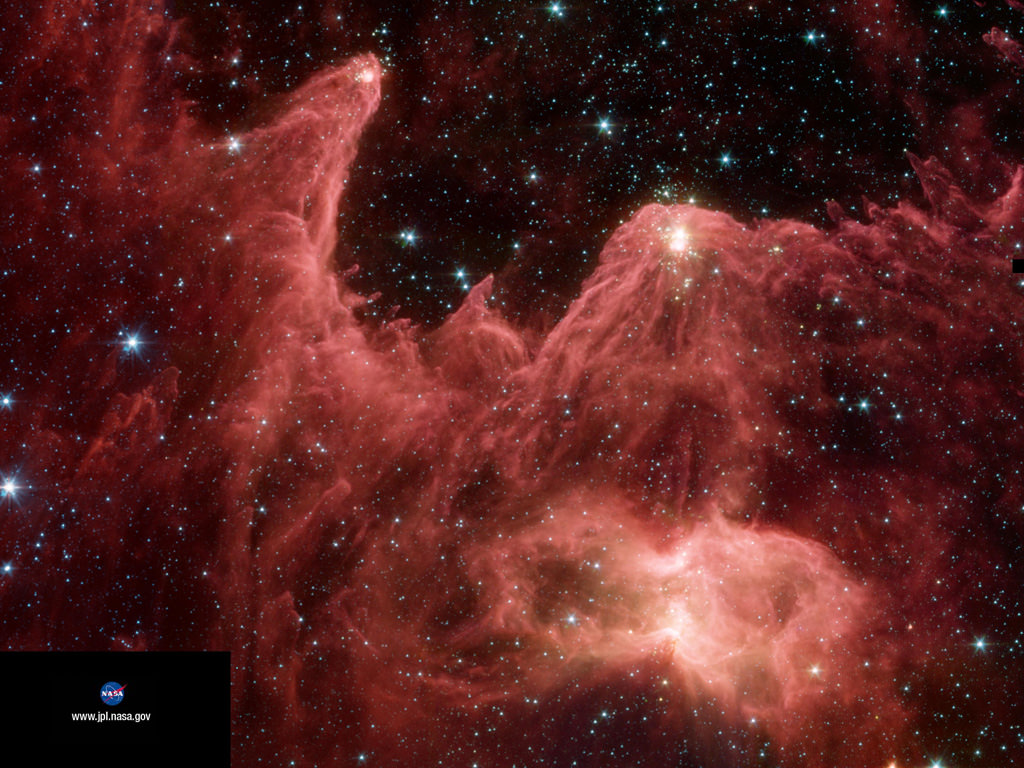[/caption]
The general picture of star formation envisions stars emerging in clusters, having condensed from cores of gas under self gravity after having passed a critical density threshold. Perhaps the cloud was pushed over the threshold by the shockwave of a supernova or the tidal twisting of a nearby object. How it happens isn’t important since the methods are likely to be many and diverse. What is important is understanding what that threshold is so we may know when it is reached. It is generally referred to as the Jeans mass and observations have generally been well in line with densities predicted by this formulation. However, over the past several years, astronomers have discovered some objects amongst a new class that form in regions and densities not readily explained by the Jeans mass criterion.
The first of this new class, named IRAM 04191, was discovered in 1999 in the Taurus molecular cloud. This object, originally discovered in the radio portion of the spectrum with the Very Large Array, was a tiny forming protostar. The discoverers announced that the object was undergoing gravitational collapse, still disassociating the molecular hydrogen in the cloud from which it formed. While this object fit the traditional picture of star formation it was unique in that it was exceptionally dim. As more of these were discovered, it established a new class of objects that are now being called Very Low Luminosity Objects or VeLLOs.
The launch of the Spitzer infrared telescope allowed for the discovery of more objects. The first one from this telescope was discovered in 2004 and named L1014-IRS. Others have included L1521F-IRS, L328-IRS, and L1148-IRS. These objects are not yet well understood but have the general characteristics of having less than a tenth of the mass of the sun, seem to be accreting heavily (as indicated by outflows), and be only on the order of tens of thousands of years old.
Among these, L1148-IRS has been an oddity. While still low in overall light output, this object was relatively bright in the infrared when compared to other VeLLOs. Studies of the object and its surrounding gas suggested that the object was forming in an unusually empty region, one in which the usual scenario doesn’t seem to fit. A new paper by the original discoverers of this object, suggest that there may be some peculiarities that may be related to this puzzle. In particular, the region doesn’t seem to be collapsing uniformly. Different portions appear to be collapsing at different rates.
Regardless of how this protostar came to collapse, L1148-IRS is an unusual case and expected to form a very low mass star or brown dwarf. Since there are so few VeLLOs, the formation of such early stages of star formation, especially for low mass stars is not well understood and future detection of similar objects will likely greatly contribute to the understanding of low-mass objects in relative isolation.


Yo Jon, at the first paragraph, there’s a double “a” in the last sentence: “… amongst a a new class…”
Speaking of development paths, when this class of objects obviates a universal condition (Jeans mass) one would suspect it does so for some particular reason. Which in turn constrains paths to likely some unique pathway.
However I see that the paper still notes many paths for VeLLOs, at least after formation: “VeLLO natal cores differ significantly in the mass of gas at high density they contain (Section 5). Since VeLLOs form from this gas, these differences may suggest that different VeLLOs take different evolutionary paths (Bourke et al. 2006). Some may have significant future accretion and attain a stellar final mass (Andr´e et al. 1999), while lack of accretion in others could render these objects young brown dwarfs (Young et al. 2004; Huard et al. 2006).”
“Vell, éLLO ‘ere, ve arth ze hippies in space!”
Fascinating! (o.ó)
Free roaming planets entering an area of dust could start such a collapse. New information indicates that such objects are more numerous than stars.
Interesting idea! Certainly, if these things are hard to start, such a frequent population would be a good idea to look for.
I prefer to imagine that we are observing the construction of new local power plants by members of a Type ~2.5 galactic civilization.
I prefer to imagine that we are observing the construction of new local power plants by members of a Type ~2.5 galactic civilization.
The universe is a fascinating thing to marvel at. It is ever vast and still expanding to this day.